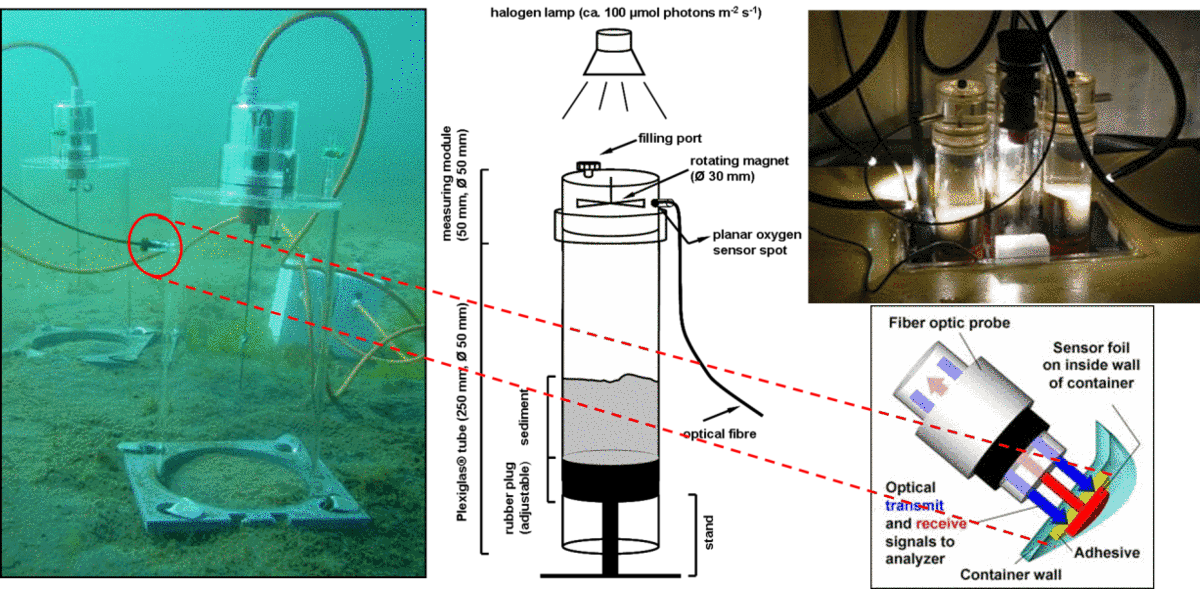B2: Microphytobenthic primary production in biofilms along terrestrial-marine gradients
supervised by Karsten, Leinweber

Focus
We will quantitatively measure microphytobenthic primary production and DOC exudation/mineralization along a coastal peatland-shallow water gradient, and its influence by terrestrial compounds, hydrodynamic parameters and sediment transport to address the biogeochemical C cycle in the shallow water zone.
State of the art
Microphytobenthos is regarded as ecologically most important microbial community on top of sediments in shallow coastal waters because of high primary production and as a food source for benthic animals. In addition, these photosynthetic biofilms stabilize sediment surfaces (reduction of erosion) due to the excretion of sticky compounds (EPS: extracellular polymeric substances) by the organisms (mainly benthic diatoms) which glue together sediment particles. Depending on photosynthetic activity and vitality, benthic diatoms excrete high concentrations of dissolved organic carbon (DOC) compounds; which are utilized by heterotrophic microorganisms in the microbial loop. Under extreme conditions up to 75% of the assimilated carbon can be released as EPC/DOC. Consequently, microphytobenthos influences and controls physico-chemical gradients, particularly of nutrients, along the sediment-water-interface. However, for the Southern Baltic Sea in-situ microphytobenthic primary production and DOC release, and its consequences for biogeochemical cycles, are almost unstudied, except singular point measurements in the inner coastal waters. In particular, quantitative measures, which are a prerequisite for accurate budgets on carbon, nitrogen and phosphorus cycles in shallow waters, are missing. Using benthic chambers, which are equipped with optical oxygen sensors, as well as the application of stable isotopes in combination with molecular-chemical spectrometric-/scopic methods will help to answer the open questions.
Work program
We will study microbytobenthos in the shallow water zone between ca. 0.5 and 8 m depth along a horizontal gradient depending on the influence of groundwater exfiltration and terrestrial compounds. A diver´s team will assist field work. Structure (e.g. biodiversity) and function of microphytobenthos will be investigated. Quantitative measurements of diurnal and saisonal in-situ microphytobenthic primary production will be undertaken using benthic chambers in combination with ex-situ studies on sediment cores in the laboratory. For both approaches established optical oxygen sensors (optodes) will be used. DOC of diatoms and DOC exudation of microphytobenthic communities will be measured in nearby water samples using mass-spectrometric techniques. The effect of terrestrial compounds and abiotic factors (light, temperature, nutrients etc.) on DOC exudation will be addressed.
